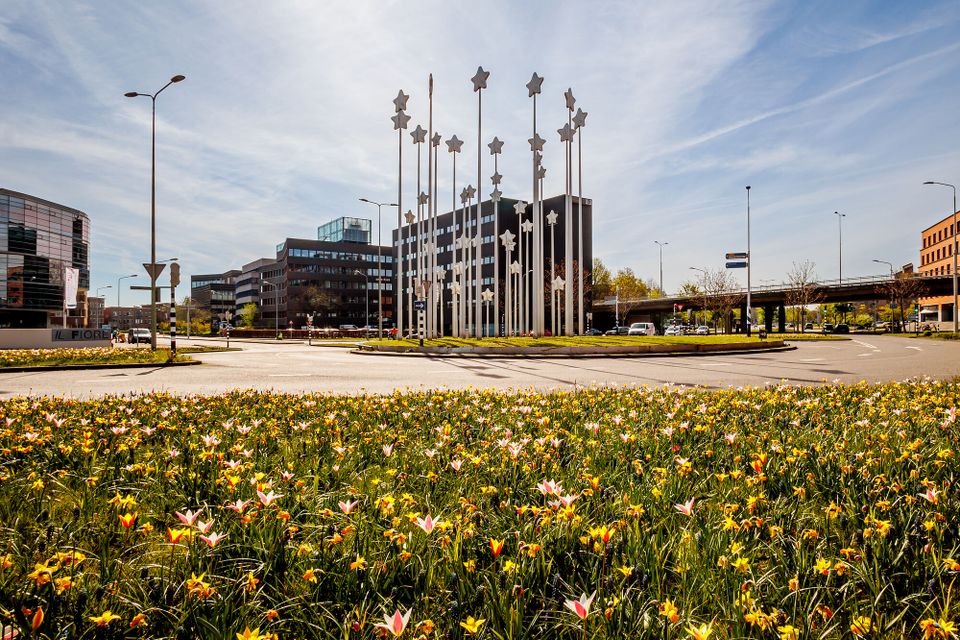Stars of Europe
Stars of Europe, MaastrichtOn the initiative of the province of Limburg and the municipality of Maastricht, the Europe Monument was erected to mark the tenth anniversary of the Maastricht Treaty.
On the initiative of the province of Limburg and the municipality of Maastricht, the Europe Monument was erected to mark the tenth anniversary of the Maastricht Treaty, which transformed the European Union (EU) into a free economic market with no trade restrictions or customs duties and with a single currency, the euro. Italian artist Maura Biava was commissioned to design the artwork in 2001. Maura Biava studied at the Rijksacademie van Beeldende Kunsten in Amsterdam. Together with the architect Ruby van den Munckhof, during the design phase for the artwork he developed a website on which the public could submit suggestions for a concept for the artwork.
The work is comprised of aluminium p…
On the initiative of the province of Limburg and the municipality of Maastricht, the Europe Monument was erected to mark the tenth anniversary of the Maastricht Treaty, which transformed the European Union (EU) into a free economic market with no trade restrictions or customs duties and with a single currency, the euro. Italian artist Maura Biava was commissioned to design the artwork in 2001. Maura Biava studied at the Rijksacademie van Beeldende Kunsten in Amsterdam. Together with the architect Ruby van den Munckhof, during the design phase for the artwork he developed a website on which the public could submit suggestions for a concept for the artwork.
The work is comprised of aluminium posts with stars that rotate in the wind. There are 35 stars: 12 big and 23 small which, together, symbolize the unification of Europe. The big stars allude to the twelve countries that, until the 1992 European Summit in Maastricht, formed the original European Economic Community. The 23 smaller stars refer to the new member states that have joined them since the signature of the Maastricht Treaty and the formation of the European Union in 1992. There are now 28 member states in all; which means that, of the 35 stars, 7 are still not in use. Texts are also painted in the poles, with quotes by famous writers, philosophers, journalists and politicians who have made a statement about the cultural and economic collaboration between European states.

